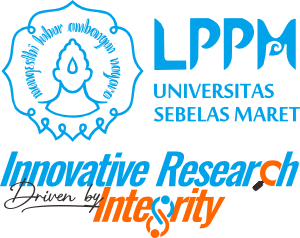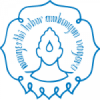By: Muzayyinah & Suratman
The aims of the reserach were to know (1) genetic resources map of identified Indigofera species in Java, (2) habitat characteristics of identified Indigofera species in Java, (3) phenotipe characteristics of identified Indigofera species in Java, (4) phenology characteristics of identified Indigofera species in Java, (4) taxonomic status of identified Indigofera species in Java, (5) anatomical characteristics of identified Indigofera species in Java, dan (6) anthocyanin content of identified Indigofera species in Java.
The research was conducted in 10 location which belonging to four provinces in Java, i.e. East Java, Central Java, Yogyakarta (DIY) and West Java. The field study was conducted on March-September. The selection of location of field study was mainly based on information from the specimens and also indigenous people. The sample was collected on each location. Information on morphological and anatomical characters were then gained from each sample. The morphological characters include information of habit, leaves, flowers, fruits, and seeds. The anatomical characters include size and stomata density, stomata type, trichomes size, trichomes density and epidermis shape. Lees and Francis method was used to test anthocyanin content in each sample. The anthocyanin content test was performed in young leaf, old leaf, flowers, fruits, stem, and also mixture of leaf, flowers, fruits, and twigs for each species.
Based on the investigation of morphological and anatomical characters, there were four species that can be recognized in this study, i.e. I. tinctoria, I. sufruticosa, I. sumatrana, and I. galegoides. These species had different distribution pattern. I. tinctoria was the most widespread species in Java whereas I. sumatrana was distributed on limited locality and only have limited collection, especially in Tuban (East Java Province). I. sufruticosa only can be found in Kulon Progo and Bantul (DIY Province), whereas I. galegoides only can be found in Giriloyo, Bantul (DIY Province). The test of anthocyanin content was done at all organs. The result showed that the best anthocyanin content was found on I tinctoria which planted on open areas whereas the lowest anthocyanin content can be found on I. galegoides which located in Giriloyo. The latest species was planted on sheltered area. The epidermis cells have the same shape on both layer, known as polygonal. The stomata investigation was done on upper and leaf lower surface. The highest stomata density in upper epidermis layer, 600/mm2, was found on I. tinctoria which located in Tuban I whereas the lowest stomata density in upper epidermis layer, 172/mm2, was found on I. tinctoria which located in Sukoharjo. The highest stomata density in lower surface, i.e. 618,2/mm2, was recorded in I. tinctoria species which found on Tuban I sample.

